If you want a textbook example of how Australian academia has lost its credibility, look no further than the below analysis from University of Western Sydney Economics Professor Raja Junankar. From Yahoo Finance:
One of the main arguments cited for reducing the number of migrants is the amount of overcrowding, congestion and pressure that migrants place on Australia’s infrastructure.
But, according to UNSW Business School adjunct professor Raja Junankar, if we were serious about tackling the issue of overcrowding, we ought to go further.
“If people believe that Australia is overcrowded and congested, we should also consider cutting back on international tourism and the growth of international students in Australian universities!” Junankar wrote in his paper titled ‘Is Australia overcrowded? Immigration and International Tourism’, obtained by Yahoo Finance…
“Without international tourism our hotel and restaurant industries would be suffering from a lack of demand and many would have to close down and declare bankruptcy,” Junankar wrote.
Between 1997 and 2015, the number of international tourists rose from 4.2 million to 7.8 million. “It is clear that international tourists make a huge impact on Australian society and economy.”
However, tourists also impose costs on Australian society in terms of congestion and the consumption of non-renewable resources such as fossil fuels, according to the professor.
“Not only do they add to crowded public transport, demand for housing, such as Airbnb, they also consume environmental resources, such as the water hotels spend on frequently washing their sheets”…
Put another way, Australia’s international tourists were using up the same amount of resources as 900,000 migrants.
“If the argument is that we should cut down on immigration because Australia is too crowded and congested then we would have to introduce policies to curtail international tourism,” he said.
“However, that is clearly not a sensible policy as many of our domestic industries rely on international tourism. Similarly, we should not consider policies to curtail immigration as it would be harmful for the economy!”
“Immigration and international tourism both have positive effects on the Australian economy,” Junankar concluded.
In all my years of covering this issue, this is one of the worst analysis I have read, and it comes from an economics professor of all people!
First, international tourists typically stay in Australia for a few weeks and then leave, whereas permanent settlers stay, have children, and add to Australia’s population base. Tourists also don’t use public services like health, education and social services. So to compare one group with the other is ridiculous.
Second, the Professor has only looked at short-term arrivals, not net short-term movements (which includes Aussies overseas). If he had done this, he would quickly have discovered that while short-term arrivals have boomed to over 9 million people annually, so too has short-term departures of Australians (over 11 million):
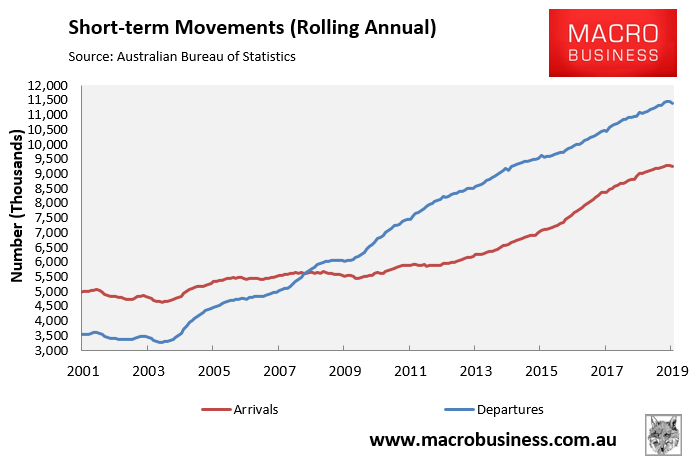
In fact, net short-term visitor movements into Australia are negative. Not only is it false to apportion any of the population pressures being felt in our cities to short-term visitors like tourists, net short-term movements are actually relieving Australia’s overall population pressures:
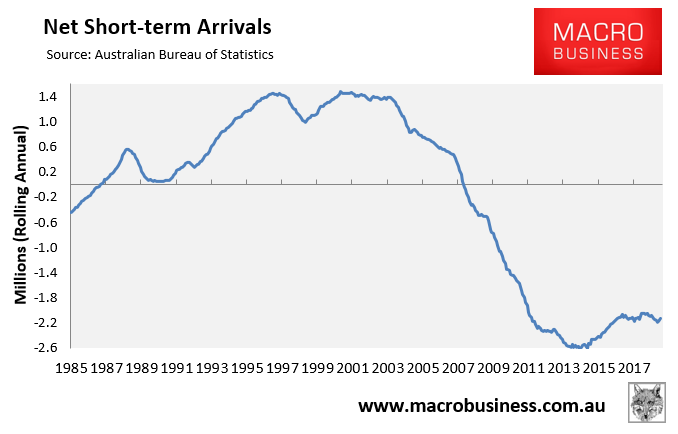
Third, it is Australia’s turbo-charged permanent migrant intake that is the primary driver of Australia’s manic population growth:
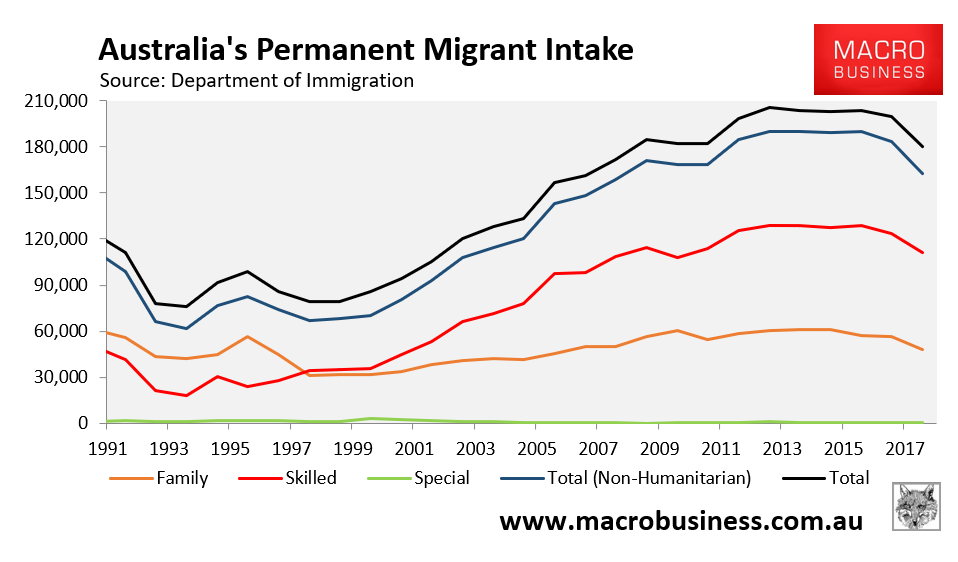
The 2016 Census revealed that Australia’s population increased by a whopping 1.9 million people (+8.8%) in the five years to 2016, driven by a 1.3 million increase in new migrants:


To add insult to injury, 86% of these migrants (1.11 million) settled in Australia’s capital cities over the five years to 2016 – a pattern that was replicated in 2017-18:
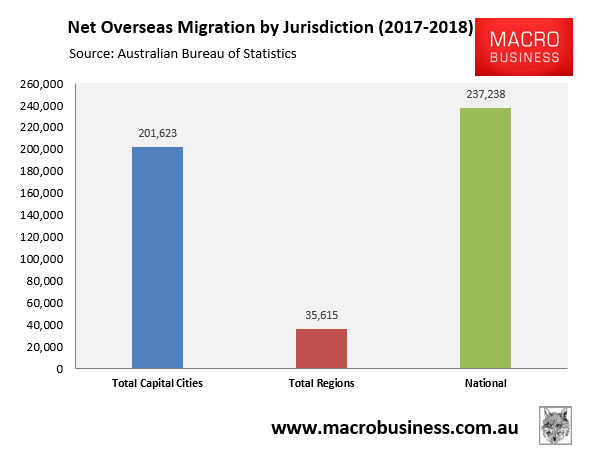
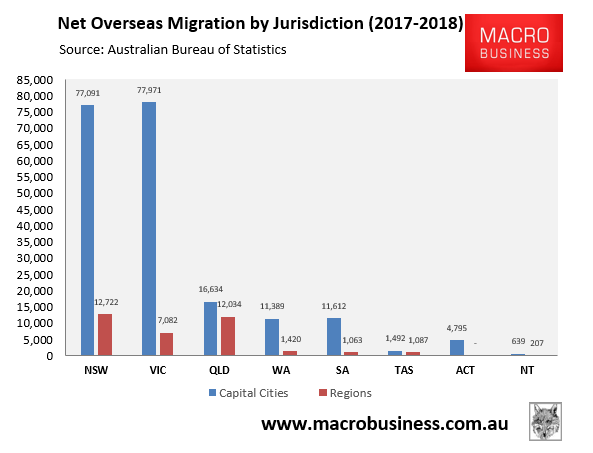
Sure, temporary migrants have also boomed, and many would be captured in the above Census figures (provided they meet the 12/18 month rule). But they increased by a relatively modest 400,000 over the same five-year period Census period:
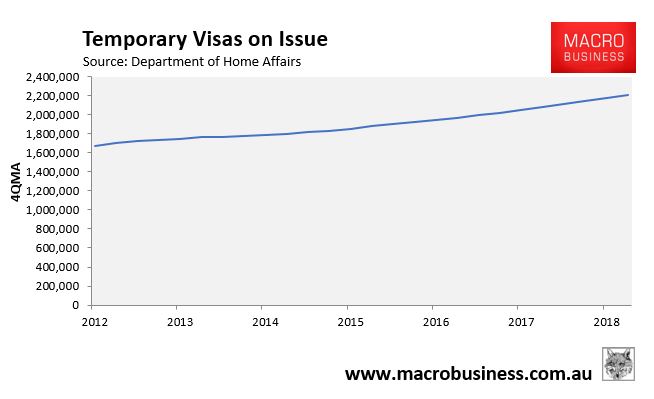
Therefore, the fundamental driver of Australia’s population increase is permanent migrants. Again, they stay in the country and also have children (then captured as ‘natural increase’). Thus, permanent migrants continually add to Australia’s population base both directly and indirectly.
If the permanent migrant intake was hypothetically reduced to zero then, over time, NOM and by extension Australia’s population would barely increase (because all temporaries would have to go home):
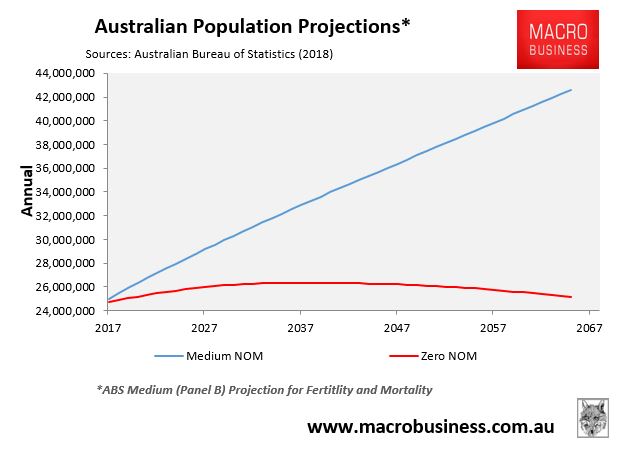
The statistics speaks for itself.

